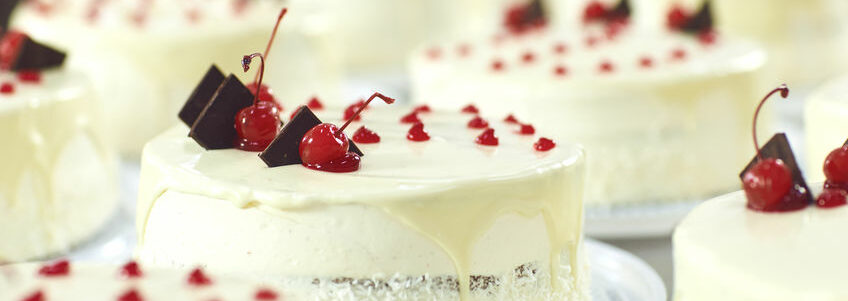Upgrading Your Cakes!

Cakes, the epitome of indulgence and celebration, come in an array of types, each with its unique flavor, texture, and character. Whether you’re a seasoned baker or just dipping your toes into the world of baking, understanding the intricacies of cake types, ingredients, processing techniques, and troubleshooting can significantly enhance your baking prowess. Let’s dive into the delicious realm of cakes and uncover the secrets to baking perfection.
Baking Cake Pocket Guide
To learn more, download the guide:
Types of Cakes: A World of Sweet Possibilities
- Pound Cakes:
Rich and dense, pound cakes derive their name from the traditional recipe that calls for a pound each of flour, sugar, butter, and eggs.
- Muffins:
Versatile and perfect for breakfast or a quick snack, muffins come in sweet and savory varieties, offering endless flavor options.
- Brownies:
Fudgy or cakey, brownies cater to chocolate lovers with their decadent cocoa-infused goodness.
- Layer Cakes:
Layer upon layer of moist cake, sandwiched with luscious fillings and frosted to perfection, layer cakes are a celebration in themselves.
- High-Ratio Cakes:
Characterized by a high ratio of sugar to flour, these cakes result in a tender crumb and moist texture, making them irresistible.
- Foam Cakes:
Light and airy, foam cakes, including Angel Food, Sponge, and Chiffon cakes, rely on whipped egg whites for their lofty rise.
5 Important Ingredients for Cake
1. Flour:
Soft wheat flour serves as the main structure builder in most cakes, while gluten-free and keto options cater to dietary restrictions.
2. Sugar:
Beyond sweetness, sugar contributes to the browning, texture and moisture of cakes, with high-ratio and alternative sweeteners like keto-friendly options gaining popularity.
3. Fat:
Whether from liquid or solid sources, fat impacts the resilience and moisture content of cakes, determining whether they’re crumbly or moist.
4. Leavening Agents:
Leavening agents like baking powder and baking soda interact with acids and bases to create the airy texture that defines many cakes.
5. Eggs:
Eggs provide structure, volume, and richness to cakes, with options for egg reduction and egg-free alternatives in recipes like cheesecakes.
6. Emulsifiers:
Emulsifiers play a crucial role in achieving the desired texture and extending the shelf life of cakes. Without them a cake production process would not have the necessary volume or shelf life.
Shelf Life and Processing: Ensuring Freshness and Quality
Anti-mold ingredients like potassium sorbate and clean label alternatives help extend the shelf life of cakes, while monitoring water activity and oxidative reactions is essential for maintaining freshness. From mixing and homogenization to depositing and freezing, precise processing techniques are vital for producing consistently delicious cakes.
Processing Tips for High-Quality Cakes
Blast freezing and encapsulation preserve the freshness and quality of cakes, while proper packaging prevents freezer burn and maintains optimal water activity. Avoiding issues like tunneling, crowned tops, and dense or crumbly textures requires careful attention to specific gravity and other factors during processing.
Embark on your baking journey armed with knowledge and confidence, and let the aroma of freshly baked cakes fill your kitchen with joy. For more in-depth insights and handy tips, download our Baking Cake Pocket Guide and elevate your bakery’s cake today!
Curious to learn more? Watch our BAKERview:
Want to stay up-to-date with BAKERpedia? Sign up for our newsletter today!


